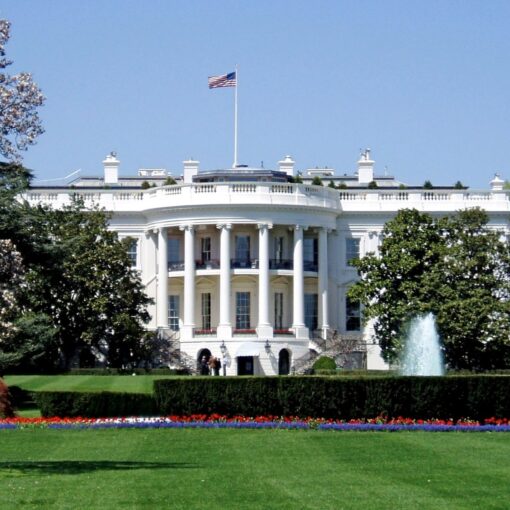By Jessica Wentz and Tim Wang
Shortly after President Trump took office, the White House issued a memorandum imposing a freeze on new and pending regulations. The memorandum directed agencies to delay the effective date of rules that had already been published in the Federal Register and to withdraw regulations that had been submitted to the Office of the Federal Register but not yet published. The purpose of the freeze is to ensure that Trump and his appointees will have the opportunity to review these regulations before they are finalized and take effect.
One significant problem with the regulatory freeze is the lack of transparency with respect to the withdrawn rules. The delayed rules are relatively easy to identify because they were published in the Federal Register – as reported on our Climate Deregulation Tracker, they included energy efficiency and renewable fuel standards. But this is not the case for the withdrawn rules. These so called “ghost rules” were withdrawn from the rulemaking process without any public notice or explanation. Some of them had gone all the way through the rulemaking process – the proposed rule was published, public input was accepted, and the rule was finalized – before being withdrawn. Others were at the proposal stage, which meant that there was no prior proposal published in the Federal Register and no way for the public to view these rules before they were withdrawn.
The ghost rules included several rules that deal with climate change adaptation and mitigation, all of which have now been added to our tracker. The most notable was a proposed update to the Small Business Administration (SBA)’s disaster loan program aimed at promoting greater resiliency to floods and future flood risk. The proposed rule would have required the recipients of SBA disaster loans that exceed $2 million for the repair or replacement of a damaged or destroyed structure to adhere to the Federal Flood Risk Management Standard (FFRMS) established in Executive Order (EO) 13690. The purpose of the FFRMS is to reduce the risk and cost of floods by ensuring that Federal investments in and near floodplains are built to withstand the effects of future floods, taking into account climate change. Specifically, EO 13690 specifies that the use of the FFRMS should “ensure that agencies expand management from current base flood level to a higher vertical elevation and corresponding horizontal floodplain to address current and future flood risk.” The Federal Emergency Management Agency (FEMA) has developed draft guidelines on implementing the FFRMS consistent with the directives of EO 13690; the final version of these guidelines would have applied to repairs and reconstruction funded through SBA loans had the proposed rule been adopted.
Several energy efficiency and conservation rules were also withdrawn as a result of the regulatory freeze. One of these was a final rule establishing energy efficiency standards for manufactured housing (proposed rule available here). This rule was mandated by the Energy Independence and Security Act (EISA) of 2007. The Department of Energy (DOE) estimated that the annual net benefit of the efficiency standards would have ranged from $5.29-$8.93 billion in net consumer benefits and $11.52-$31.95 billion in net nationwide benefits over a 30-year period. The nationwide benefits are much larger because they include the environmental impacts of the anticipated CO2 and NOx reductions from the energy efficiency savings. In addition, the DOE withdrew four final but not yet published rules establishing energy conservation standards for portable air conditioners, walk-in cooler and freezer refrigeration systems, commercial packaged boilers, and dedicated purpose pool pumps. DOE estimated net benefits of these four standards could be as much as $40 billion over a 30-year period based on consumer operating cost savings and greenhouse gas reductions. Finally, the Department of Transportation (DOT) withdrew a proposed rule that would have established a national tire fuel efficiency consumer information program that would educate consumers about the effect of tires on fuel efficiency, consistent with a mandate from EISA. DOT estimated that the annual net benefits of the rule would have ranged from $1.2 – $12.7 million.
As noted in a ProPublica article, these and many other rules could “melt away without a trace.” Granted, it is possible that some of these rules will be reinstated following the review. But there is a good chance that many of these rules – particularly those aimed at environmental protection – will be withdrawn permanently in light of President Trump’s deregulatory agenda and subsequent orders furthering that agenda, such as the executive order directing agencies to ensure that new regulations impose no net costs and to rescind two regulations for every new regulation issued (discussed on our blog here).
There may be legal recourse for the final rules that have been withdrawn during the freeze. The Center for Progressive Reform sent a letter to federal agencies earlier this month explaining how the withdrawal of final rules without a reasoned explanation runs afoul of the Administrative Procedure Act (APA)’s requirements for notice-and-comment rulemaking. However, those requirements do not necessarily apply to the withdrawal of proposed rules. Although agencies do frequently provide an explanation for withdrawing a proposed rule, there is no clear legal requirement that they do so.
A significant amount of time and effort went into the development of these rules, and many of them are aimed at implementing important congressional directives. To withdraw these rules without any public notice or explanation is wasteful, irrational, contrary to the public interest, and in some cases may be illegal. At a minimum, the administration should be transparent about which rules have been withdrawn and the status of their review. The administration has not published a list of the withdrawn rules, and according to the Office of Federal Register, a Freedom of Information Act (FOIA) request would be needed to obtain the complete list. Just as important, agencies need to be vigilant about fulfilling their statutory mandates in the face of President Trump’s deregulatory agenda. “Because the President said so” is not a reasonable explanation for withdrawing a regulation that is required under a statute and that took considerable agency resources to develop. Agencies should clearly communicate the statutory basis and necessity of their rules to the White House and the Office of Management and Budget during this review process and take other measures to ensure that their actions are in accord with the APA and the statutes they administer.



